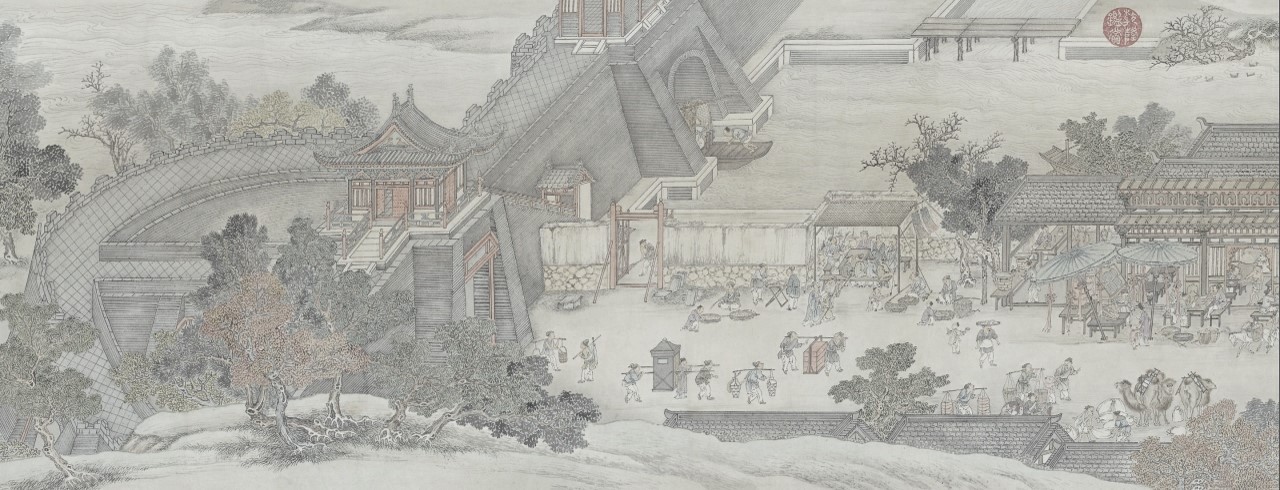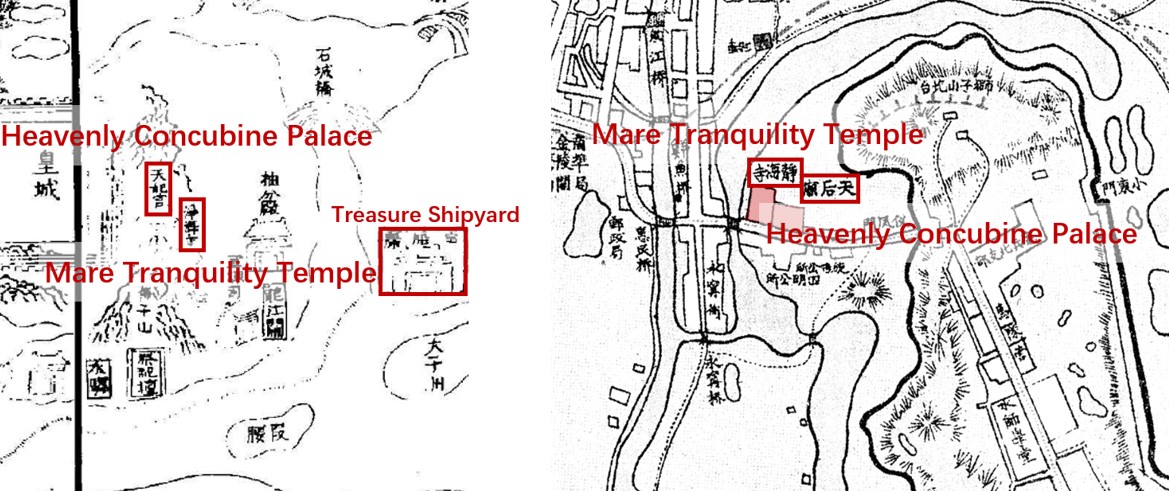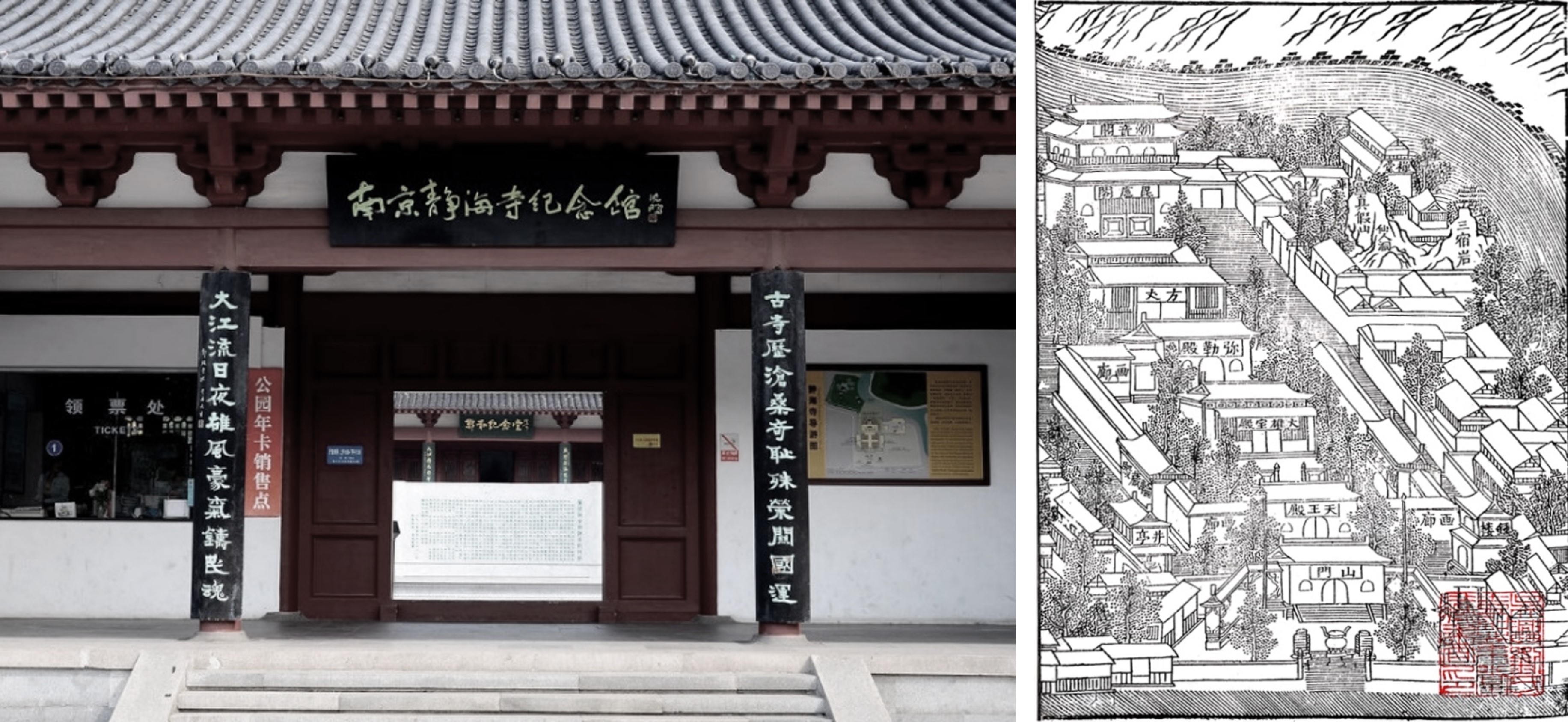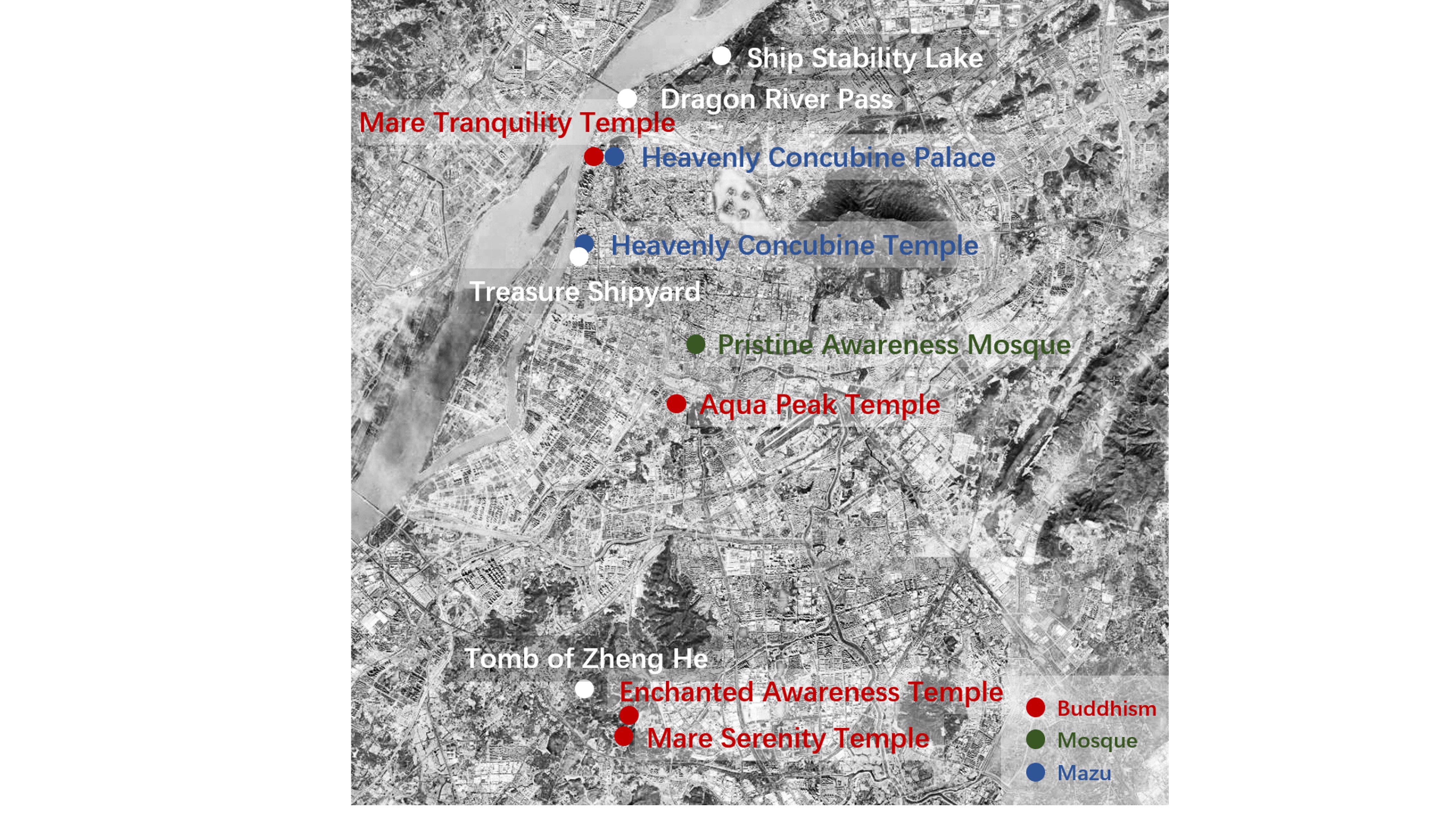Urban Analysis
Urban Analysis: Urban Dynamics and the Treasure Shipyard’s Influence on Ming Nanjing
Tutor: Wei Chen, Chapter of Master’s dissertation, 2022, Southeast University
This study delves into the transformative impact of the Nanjing Treasure Shipyard on Ming Dynasty Nanjing, examining how this pivotal industrial hub catalyzed significant urban and architectural developments.

Urban Planning and Development
The construction of treasure ships and the subsequent expansion of the Treasure Shipyard were monumental feats of engineering that significantly influenced urban development strategies. This analysis explores how the shipyard’s expansion not only supported maritime endeavors but also stimulated surrounding industrial activities and facilitated the construction of key religious and civic structures. The integration of these elements into Nanjing’s urban fabric exemplifies the shipyard’s role in molding the city’s spatial and functional arrangements.
Impact on Urban Architecture and Civic Life
The Treasure Shipyard emerged as a critical node of economic and cultural activity, reshaping various facets of urban life in Ming Nanjing. It fostered a diverse urban environment, where the construction of religious and cultural edifices was integrally linked with the shipyard’s operational demands. This section highlights how the shipyard’s activities were intricately connected with broader urban planning and architectural responses, reflecting a holistic approach to urban development.

Preservation and Urban Analytical Perspectives
The conclusion of this study presents strategies for the preservation of the Treasure Shipyard, emphasizing the need for an urban analytical approach that appreciates its historical and contemporary significance. Recommendations include conducting detailed archaeological and urban studies to further understand the shipyard’s enduring influence on Nanjing’s urban landscape, proposing that these findings inform modern urban development and heritage conservation.

Contribution to Urban Studies
The analysis provides valuable insights into the role of industrial architecture in urban growth and planning. By examining the rules of construction and building types specific to Ming Dynasty shipyards, this work enriches the field of urban studies, showcasing the Treasure Shipyard as a crucial example of how industrial facilities can profoundly affect urban trajectories.

 This study underscores the Treasure Shipyard’s pivotal role in the urban and architectural evolution of Ming Dynasty Nanjing, offering a detailed exploration of how large-scale industrial projects can drive urban transformations and influence socio-cultural developments.
This study underscores the Treasure Shipyard’s pivotal role in the urban and architectural evolution of Ming Dynasty Nanjing, offering a detailed exploration of how large-scale industrial projects can drive urban transformations and influence socio-cultural developments.
